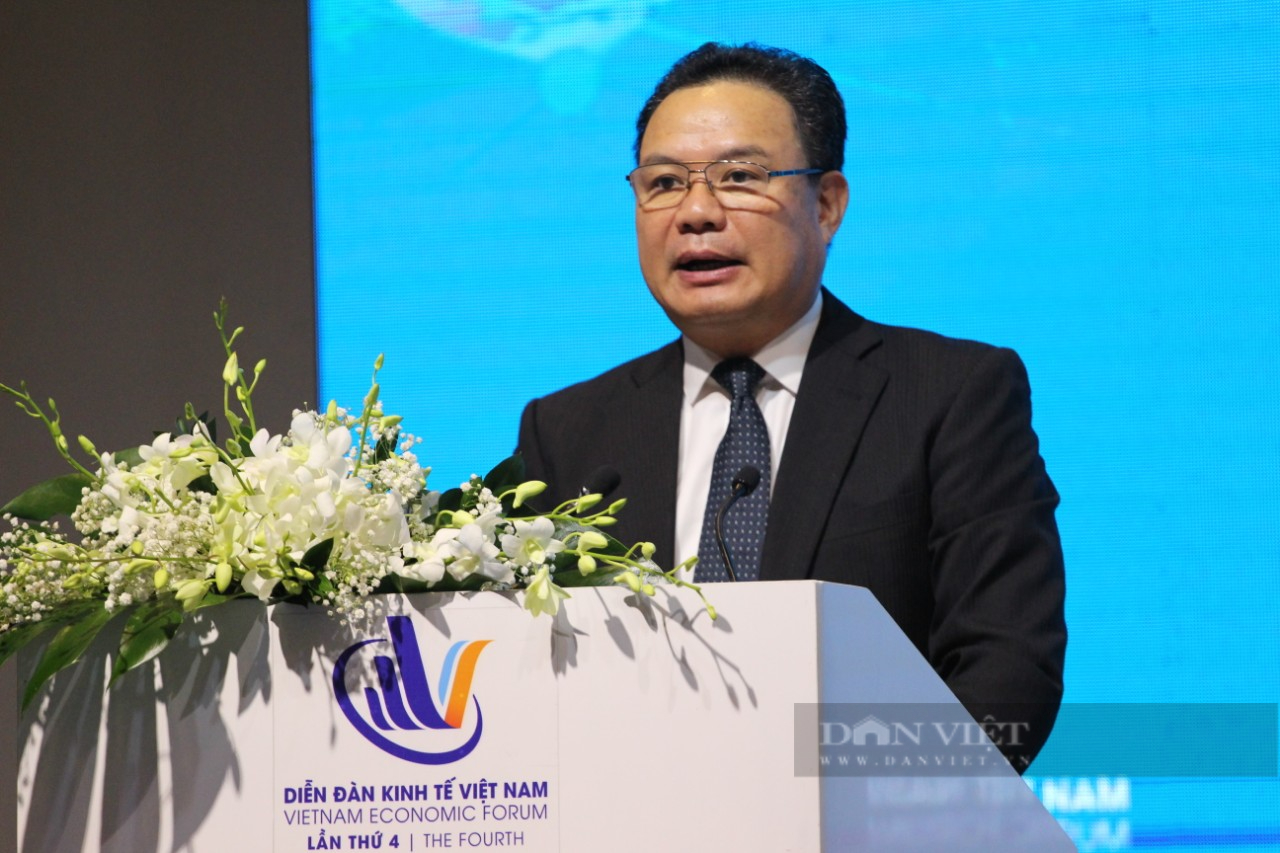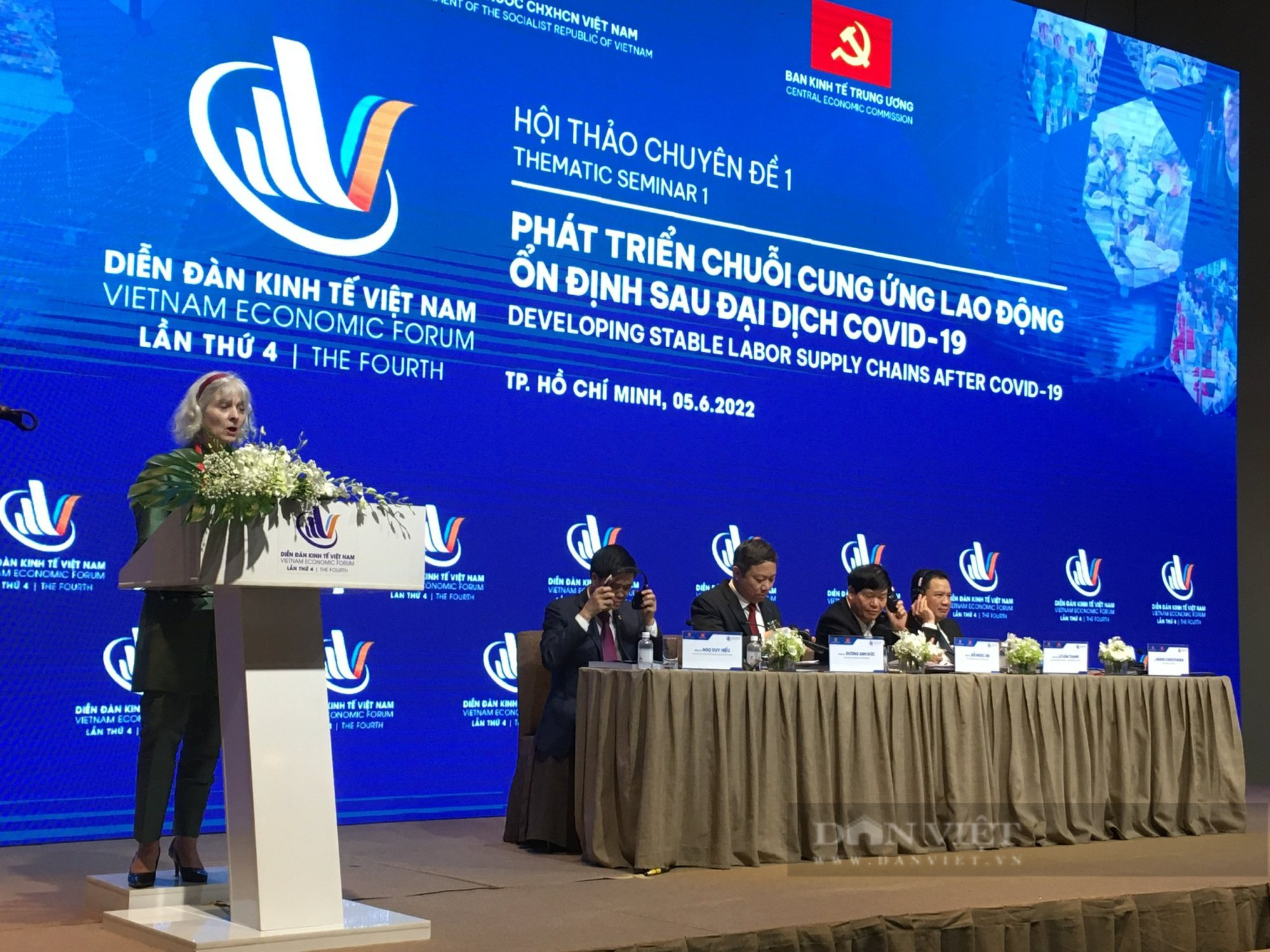How to untie the labor supply chain after the Covid-19 pandemic?

Deputy Minister of Labor, Invalids and Social Affairs Le Van Thanh at the Forum. Photo: Thanh Nhan
More than 1.7 million unemployed workers, gAt the labor supply chain bottleneck after the Covid-19 pandemic
Deputy Minister of Labor, War Invalids and Social Affairs Le Van Thanh said that over the past two years, the Covid-19 pandemic has had a strong impact on all socio-economic aspects of countries around the world. For Vietnam, the Covid-19 pandemic has slowed down Vietnam’s economic growth, disrupted production and business activities in all fields; the labor situation, employment and life of employees are negatively affected
Labor supply has been severely reduced, the number of employed workers has fallen to the lowest level in many years, of which the labor force aged 15 and over decreased the most in the third quarter of 2021, to only 49. 1 million people; Labor force employed in the fourth quarter of 2021 was 49.07 million people, 1.79 million lower than the same period last year.
The rate of underemployed and unemployed workers increased sharply, reaching the highest peak in the third quarter of 2021 at 3.98% (more than 1.7 million employees); The unemployment rate in urban areas was highest in the third quarter of 2021 at 5.54%. About 1.3 million laborers moved from urban areas to rural areas, from major economic centers to provinces.
Wages and incomes of workers decreased, life of workers was difficult, in which the average monthly income of workers from 6.7 million VND in 2019 to 5.3 million VND in 2021, the deepest decrease. In the third quarter of 2021, it was only 5.2 million VND. This makes the life of workers, especially foreign workers more difficult.
Ms. Ingrid Christensen, Country Director of the ILO Office in Vietnam, asked: After the health crisis, there are economic and labor market challenges. The impact of the pandemic has raised important questions that are at the top of the agenda. How can Vietnam consistently pursue long-term development goals, in the current context? How can Vietnam define its own path of sustainable and inclusive development towards the goal of a middle-income country, and ultimately a high-income country?

The topic of labor supply chain development at the 4th Vietnam Economic Forum. Photo: BD
Positive signs
Ingrid said that this economic forum is an important step for Vietnam to build a future of work in line with its principles and goals, one of which demonstrates Vietnam’s way of doing business. achieve the goals of sustainable development and leave no one behind, with a focus on the informal economy. The informal economy is making an important contribution to Vietnam’s economy, but workers (including both women and men) in informal employment do not enjoy adequate protection from the labor law. . International experience shows that a large proportion of the informal economy can hinder a country’s development potential.
According to Ngo Duy Hieu, Vice Chairman of the Vietnam General Confederation of Labor, after 2 years of the Covid-19 pandemic, the labor market in the first months of 2022 has prospered. The number of people aged 15 and over returning to the labor market is increasing. In the first quarter of 2022, the labor force aged 15 and over was 51.2 million people, an increase of 0.4 million people compared to the previous quarter. The average monthly income of employees reached 6.4 million VND, an increase of 0.4 million people. VND 1 million compared to the previous quarter and an increase of VND 110,000 compared to the same period last year.
However, according to Deputy Minister Le Van Thanh, besides the signs of prosperity, especially the labor supply, there are still some problems: Labor supply has not met the demand of enterprises in the industry. economic recovery period, especially for highly qualified workers.
Some localities, regions and industries are still experiencing an imbalance of supply and demand, and a shortage of local supply. Particularly in the first quarter of 2022, there was a local labor shortage of about 120,000 workers, about 2-3% higher than in previous years, mainly unskilled workers in the textile and garment industry, assembling electronic components, processing. Timber and a number of industries were strongly affected and had to stop working for a long time such as tourism, education…
The qualifications of workers have not yet met the requirements of technological restructuring, especially in the recovery period, many businesses are actively implementing digital transformation and applying industrial revolution 4.0 achievements.

Ms. Ingrid Christensen, Country Director of the ILO Viet Nam office. Photo: BD
The labor structure between the formal and informal sectors has not yet returned to the pre-epidemic state and there is a lack of positive incentives to promote a strong shift in the number of informal to formal workers; The ability to connect supply and demand, and to introduce jobs to meet market requirements has not really met actual requirements.
Currently, the Ministry of Labor – Invalids and Social Affairs has also proposed and implemented many solutions to restore the labor market such as focusing on ensuring basic social security for employees; improve the quality of human resources, train workers in skills to meet digital transformation; developing the labor market information system, strengthening the connection between labor supply and demand to effectively use human resources, however, the above solutions only meet part of the requirements of the labor market and there are still many problems.
According to Mr. Ngo Duy Hieu, it is necessary to focus on developing a synchronous, modern, flexible and unified labor market. In which, it is necessary to create an environment for recovery and development of the labor market, to best meet the needs of economic development; improve the quality of labor; continue to amend and improve policies and legal regulations on labor supply – demand relations… Especially, it is necessary to soon improve and perfect policies on wages, social security, and comprehensively amend policies and procedures. books on social housing, worker housing, upgrading existing hostel standards…
at Blogtuan.info – Source: danviet.vn – Read the original article here



